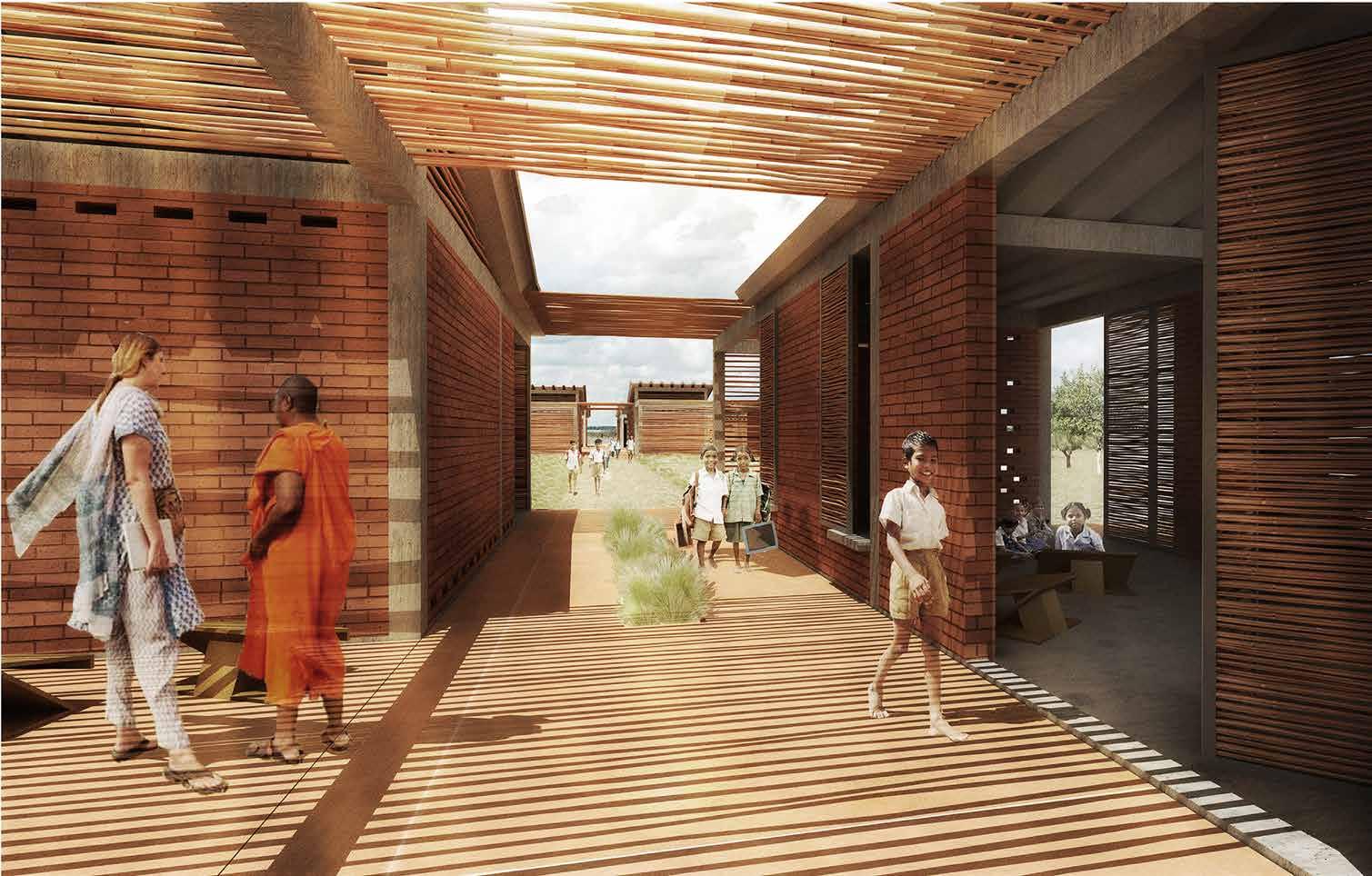

2 The Line | Danilo Udovicki and Larry Doll | Fall 2014
T H E L I N E
height
width of each microprogram
The Line was a seven-week multi-use project with the goal of designing a ZAC or a city block in the ninth arondissement of Paris, France, between a park and a railway line. The program included 300 units of housing, an elementary school, an office building, and retail.
Within these larger programs we identified microgroprams that were shared (such as social, meeting, copy, and break rooms) and those which were more individual and repeated (apartments, offices, classrooms). We organized all of the shared programs into one continuous single-loaded line, and then wrapped this line around the site, fitting it into a general massing plan we made based on site influences such as sun, wind, and noise.
The shared programs vary in size and height, creating a complex volume that carves through the repetitive housing and office units. Each twist and turn in the line was intentionally planned to create outdoor voids in the block that would have irregular form derived from the different volumes of the line protruding out of the facade. The line was continous from the housing, to the school, to the office. At the points where the larger programs changed, we chose microprograms that would fit both sides: a preschool/daycare center between the school and the office, and a gym between the school and the housing.
The line includes stairs and rises several stories. It only touches the ground at the entrances to the housing, the school, and the offices.








 view of office atrium
view of office atrium





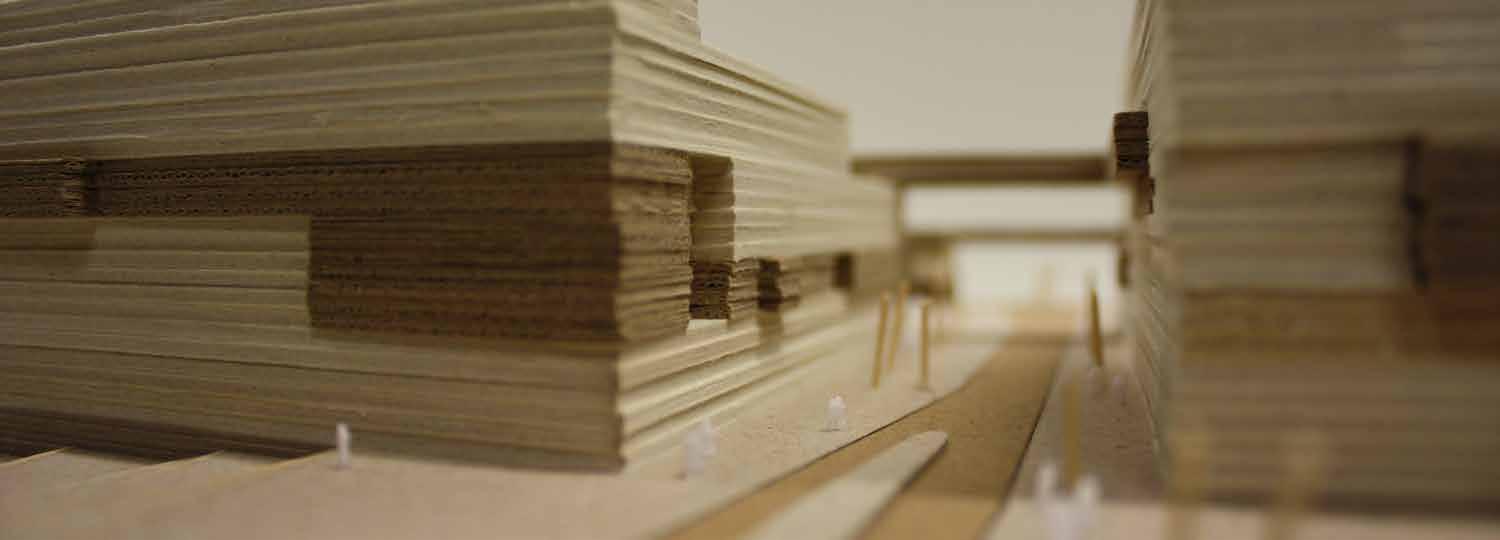

ROLLING CENTER ]
For this comprehensive studio the program was to design a widespan bowling alley, roller derby track, and restaurant, on a site neighboring Waller Creek. Both bowling alleys and roller rinks are typically housed within box buildings with unoriginal structural systems. I wanted this center to break that stereotype and give the people of Austin a new experience with the combination of these two programs under one roof. I also wanted to express the different nature of the two programs: bowling, where the ball rolls in a fairly straight line and rollerskating, where the path is chosen by the participant, and tends to be more organic. With this in mind, I placed the bowling, the restaurant and the roller derby within a rectangular box, and then weaved a curvy skating track through the building, allowing it’s organic curves to break the orthagonal box. The skating track is open air, and expands near the building entrances to allow people to slow down to enter.



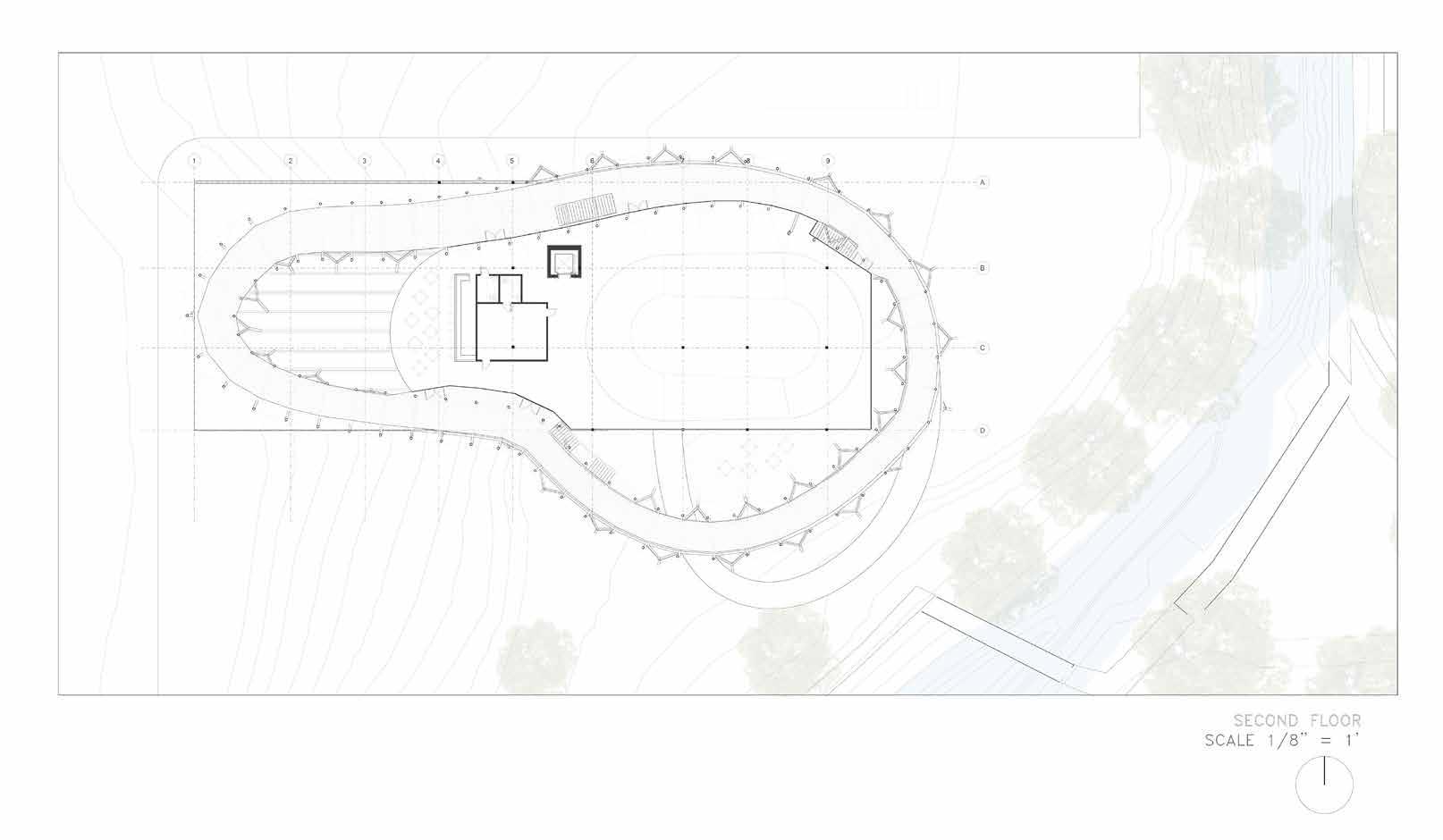






This luminaire features a perforated wood column which floats on diffuse Plexiglas above a wooden base. There is a photo sensor on the top of the lamp which detects the amount of light in the surrounding area. When dark, a soft orange glow emanates from the top of the column, letting you know from a distance that the table is available. Once seated, there is a switch in the lamp cord which turns on a brighter light in the base of the column which shines upward and filters through the perforations in the wood column to illuminate the table.
Group members: Stancey Moore, Ariana Hallenbeck, Bernardo Jimenez

SINGLE LED LAMP 1/8 “ PLEXIGLAS


LASER CUT 1/4 “ CRAFT PLY
“ FROSTED PLEXIGLAS

DIMENSIONS 4 “ x 4 “ x 18 “
WEIGHT 2.75 lBS



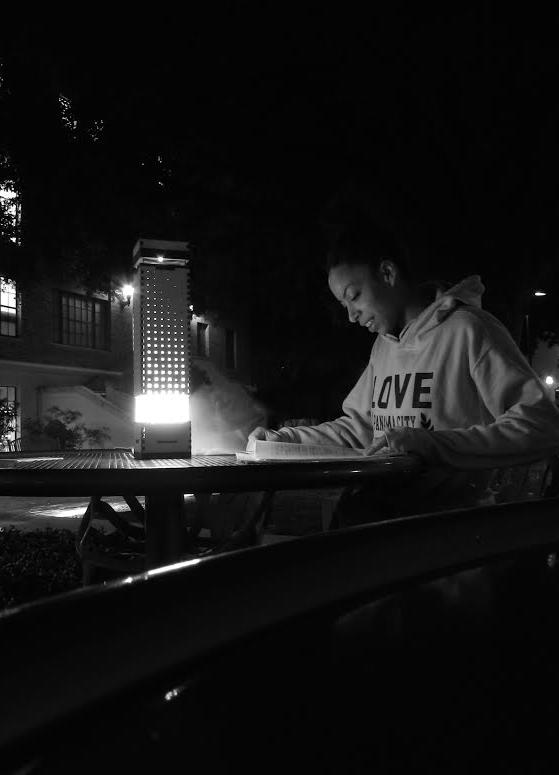
This thin rectangular site is part of a larger urban plan. Its role is to link a public pedestrian-only pathway from the residential neighborhood through to Lamar Street.
The pathway divides the first two floors of commercial shops and retail. In order to achieve the desired width for housing the residential floors span across the open pathway. The Z-shape form was chosen both to let in light to the first level but also to allow the apartment units to avoid a direct view into the other units.
The apartments were lifted to provide a shared space for the residents that would include a grassy play area, a garden, and a pool.



The building was planned thinking about a specific unit design. I designed a bar of apartments which each have access to a small outdoor space that is shared between two units. Some of the units are double level, with the access to the outdoor space on the lower level. For privacy the shared outdoor space does not have an aperature on the first level, but has large openings on the second level to allow light but not views in. The opening frames the sky for the inhabitant

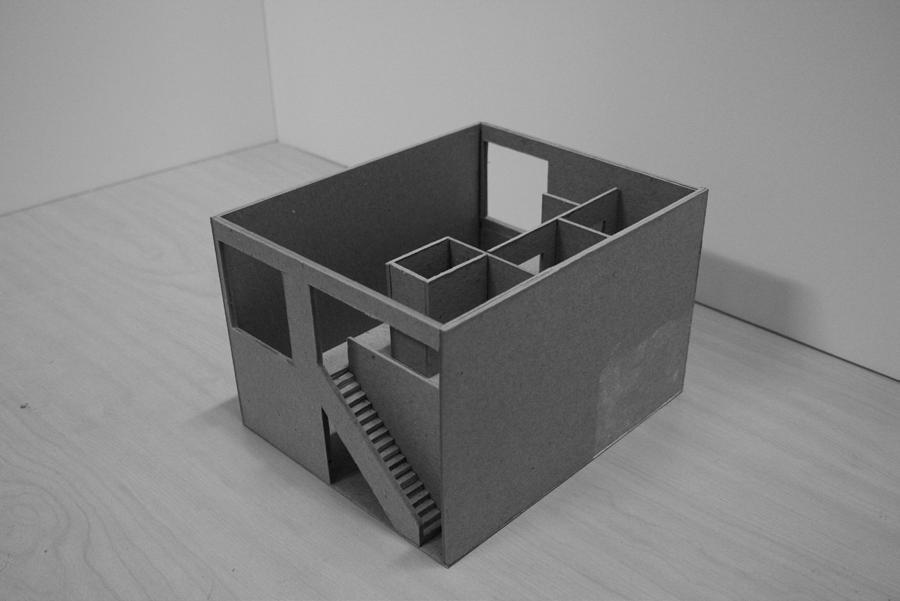



 view from within shop
view from within shop

The third and final visual communication course was an exploration of the digital algorithmic modeling and building information modeling software of Grasshopper and Revit, as well as continuing to utilize Rhino and Illustrator. The paramentric field project used grasshopper to generate a form from the RGB values of an image, then created drawings and a chipboard model of that form, as well as drawings and renderings.
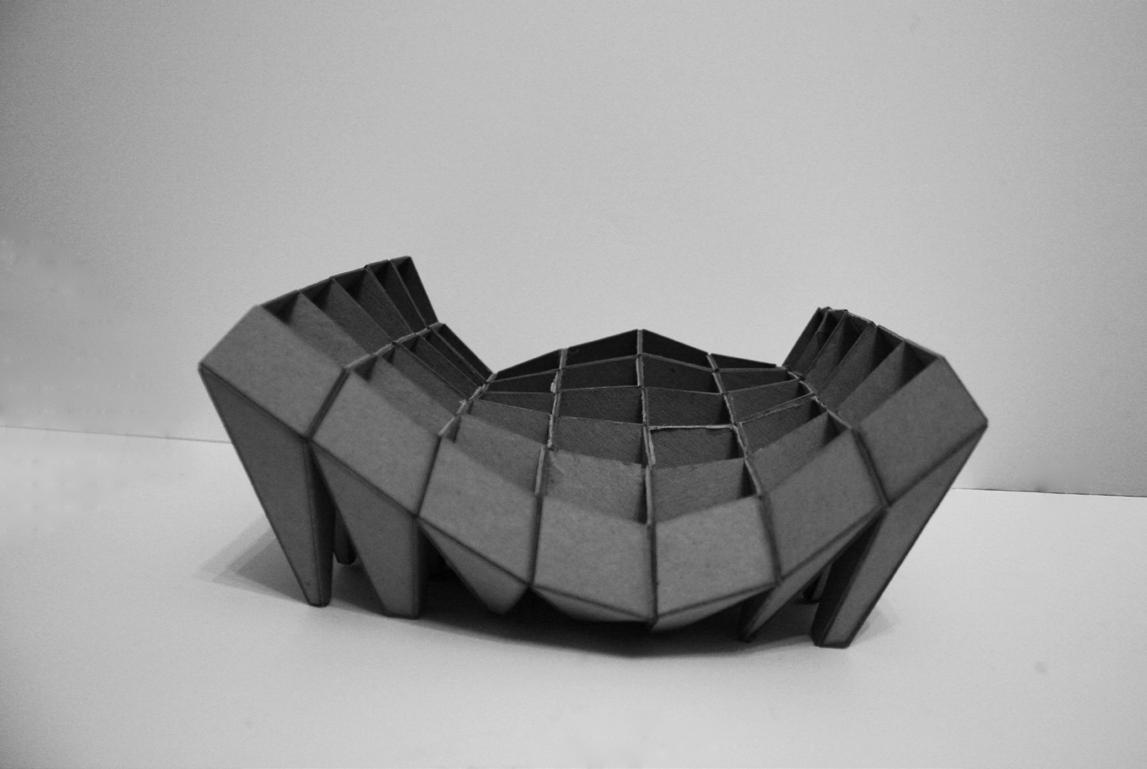

mood rendering


Caret 6 is an installation built to showcase the winner of the SKIN Design Competition as part of TEX-FAB 5 SKIN: Digital Assemblies.
The project originated from a diamond module, which are combined at different scales to form a surface condition and a vaulting condition. There are three materials used in the project, Alpolic on the arching column ribs, HTPE on the ribs which are on the ground surface, and polypropylene on the surfaces of each diamond.
Studio Members: Aarti Khatter, Alex Dallas, Alexis MeurBelcour, Alline Kane, Bernardo Jimenez, Brenda Morlan, Estrella Juarez, Gabriel Tagliante-Saracino, Isabelle Koch, Kelsey McCarter, Kevin Keating, Layla Salameh, Michael Rahmahtoulin, Nadia Aseeva, Stancey Moore, Zach Walters
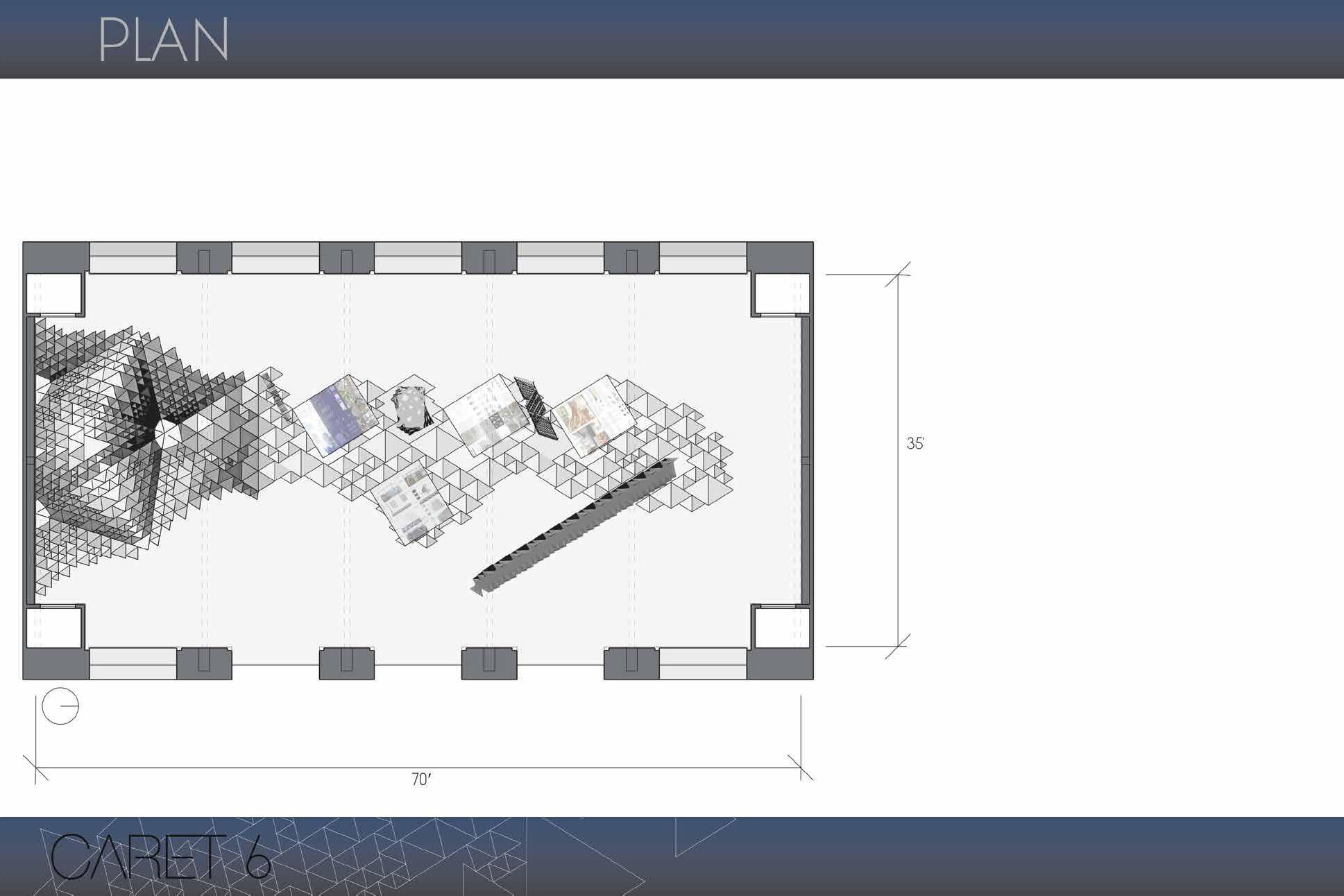





joint connection details



surface infill


tertiary ribs
secondary ribs
primary ribs




BODHI DHARMA SCHOOL ]
The Bodhi Dharma School is a K-12 school designed for the Dalit (previously-known as untouchable) community outside of Tiruvannamalai, in southeast India.
As a studio we travelled to India to meet the community and learn about the building technologies available to the villagers who would construct the project with earth block.

The project created a naturally ventilated repeatable classroom module so that the school could expand in phases. The master plan shows groups of classrooms clustered around a common courtyard that faced the nearby mountain.
Studio Members:
Alex Dallas, Pearlene Cheah, Alex Warr, Ricardo Diaz, Rebecca Brown, Siwen Fang, Tobi Gutheil, Joel Effland, Henry Wen, Felipe Calderon, Ben Parker, Ageliki Giannisi
